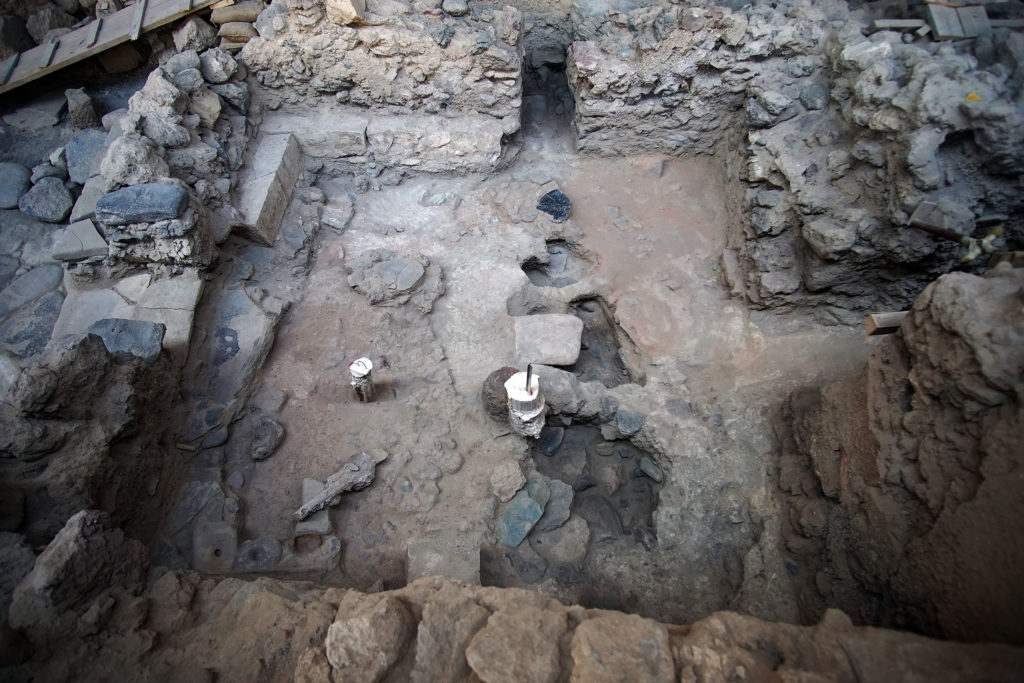Santorini island news
New unique finds from the prehistoric city of Akrotiri
Significant new finds were revealed during the ongoing excavation at Akrotiri Thira, under the auspices of the Archaeological Society and the direction of Professor Christos Doumas. The excavation is carried out subject to the supervision of the Cyclades Ephorate of Antiquities and sponsored by the Kaspersky Lab.
In 1999, the famous golden ibex exhibited at the Museum of Prehistoric Thira was found in the interior of the building, known by the conventional name “House of Desks”, which was probably a public building. The ibex was found in a clay chest beside a pile of animal horns. In 2019, beneath the ruins, an unexpected abundance of unique finds was discovered.
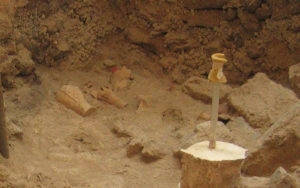
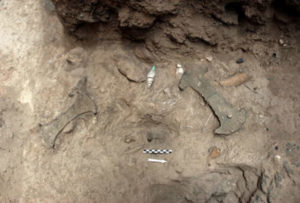
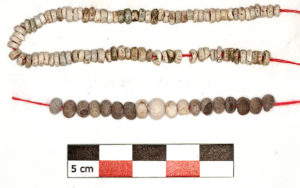
Regarding these finds, the Ministry of Culture and Sports announced the following:
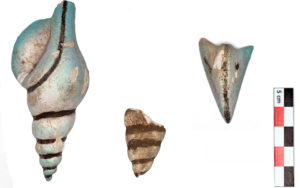
In Area 1, four ribbed ceramic vessels, partially discovered in earlier excavations, were brought to light (fig. 2), as well as bronze objects, such as two large double axes made of very thin bronze blades and other miniature horn cores (fig. 3), as well as small fragments and beads from one or more necklaces (fig. 4). Also, exquisite shell poterry (fig. 5), an octagonal shield shaped bead of rock crystal (fig. 6), with red thread remains in the suspension hole. The above objects were found under a wooden constuction, and may have been hanging on it. Finally in the backfills of the door openings of Area 1 rosettes were found (fig. 7), possibly coverings of wooden elements. The inscribed fragment of a triton shell effigy is particularly emblematic. The inscription, consisting of Linear A syllables and an ideogram, is written in ink on an object which is most likely related to the use of the building, also uncovered in the dig.
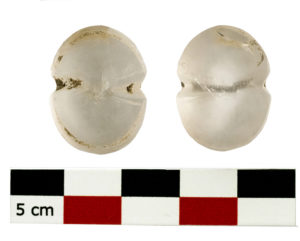
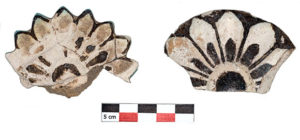
Loose layers of sea sand with small pebbles, gravels and soil on the floor of Area 1 were attributed by geologist G. Vougioukalakis to deposits of a tidal wave (tsunami) that preceded the volcanic eruption.
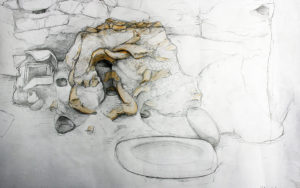
In Area 2, around the south and west flanks of the Deposit of Horns, sockets of at least six wooden piles were discovered, in which plaster was injected to create casts. The excavation data shows that the piles created a kind of grid on which the horns were deposited (fig. 8). Stone tools and utensils (fig. 9), mixed with horns, were found at the base of the grid. In total, 43 small open vessels and 2 closed ones were brought to light, while right next to them textile remains and burnt fruits were discovered. The dating of some vessels from the early phase of the Late Cycladic period confirms that the building was in use and functioning until the final destruction of the city.
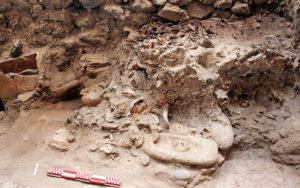
To the west of the Deposit of Horns another pair of clay containers was revealed with the larger being upside down. The smaller one was placed inside it, in which in turn a wooden box had been sunk in clay mortar, as its imprint attests. Placed inside the box was a marble Protocycladic female figurine of the Spedos variant in a supine position, missing the neck and head and the legs from below the knees. The inner surfaces of both the small clay containers and the wooden box are coated with a vivid red color (fig. 10).
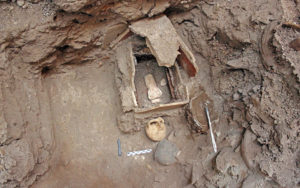
In the southwestern part of Area 2, under broken floor tiles, fragments of stone tools and sea pebbles, two clusters of miniature Protocycladic vessels came to light.
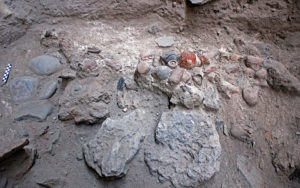
One consisted of 16 vessels placed around a wooden object (fig. 11), the shape of which is hoped to be established after the plaster cast of its imprint has been removed. The second cluster consisted of 131 miniature vessels inside a shallow floor cavity (fig. 12).
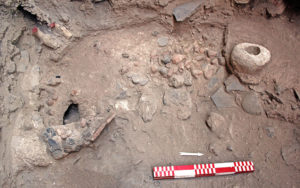
Similar types of vessels have been found both in the wider area of the House of Desks and in the earlier phase of the settlement below the Cenotaph Square – an area probably associated with burial cult. The small size of these vessels, their coarse construction, their mumber, and the complete absence of Protocycladic graves with similar offerings, indicate that they were vessels produced massivelly for a specific purpose. Their concentration in the aforementioned areas, with their strong symbolism, suggest that these were vessels for drinking used during mass rituals.
“It is obvious that the ongoing excavation at the House of Desks on the southern edge of the prehistoric city of Akrotiri, next to Xeste 3 – the important public building with its rich fresco decoration – is expected to reveal a multitude of additional finds that will give a new impetus to answering essential questions regarding prehistoric Aegean society,” concluded the announcement of the Ministy.

